High Peaks Pure Earth has translated a piece about Tibetan musical notation originally published on the “Melong Art” WeChat channel on January 17, 2020.
Even though Tibetan music has had a complex scoring system for hundreds of years, it’s still interesting to share these kinds of introductory pieces and to see the images gathered from various online sources. The Melong channel on WeChat continues to post interesting cultural content and previously we’ve translated posts on topics ranging from comic books, documentary films, advertisements in old Tibetan newspapers and contemporary art in Lhasa.
“The Book of Ancient Tibetan Melodies: Flowing Like a River, Light Like Bird Song”
By Melong Art
Religion finds its roots in culture, but also makes culture richer and more colourful.
This is what happened in the 7th century, when Buddhism entered Tibet. Buddhism in some sense replaced and transformed the local Bon beliefs but it was simultaneously influenced by it. Among the many creative practices resulting from this, Tibetan Buddhist music occupied a very important position.
In the same way as Western religious music, traditional Tibetan music has its own complex scoring system and a long religious musical history. The chanting tradition called “Yang” (“央”དབྱངས།) represents one of the most widespread and important traditions, which relied on a scoring style known as “Yang-Yig”.
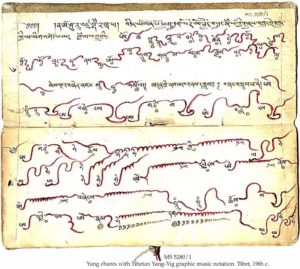
In Tibetan, “yang” means “tone, melody and rhythm,” while “yig” refers to words, lines and lyrics. Together, “yang-yig” refers to the combination of “chanting and reciting” as practiced during Buddhist assemblies and rituals. The “yang-yig score” developed in an attempt to record slowly disappearing forms of vocal music, using a special kind of symbolic system, which eventually formed into a comprehensive scoring system.
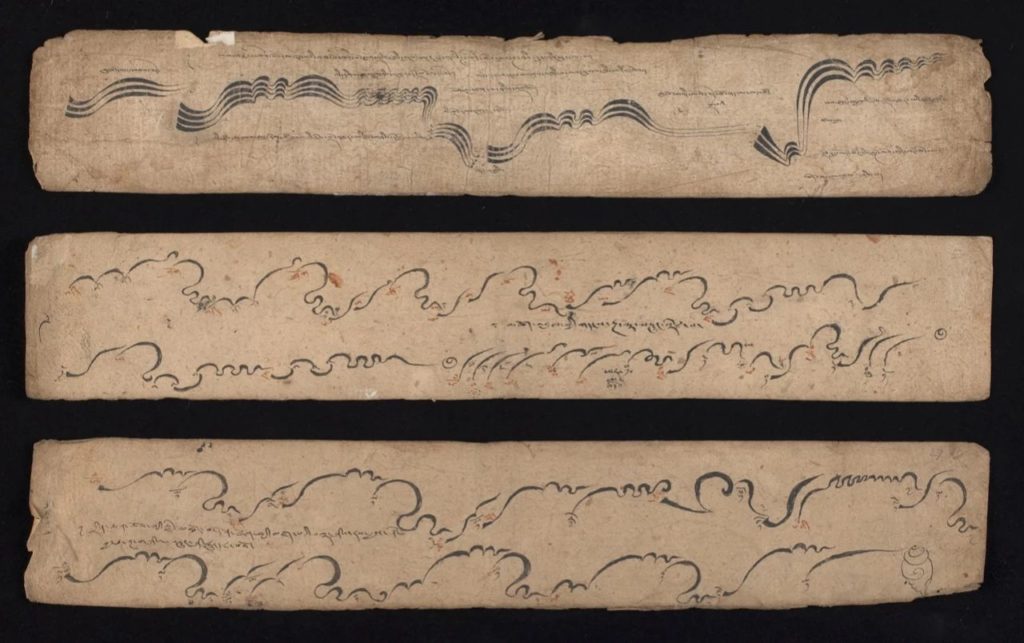
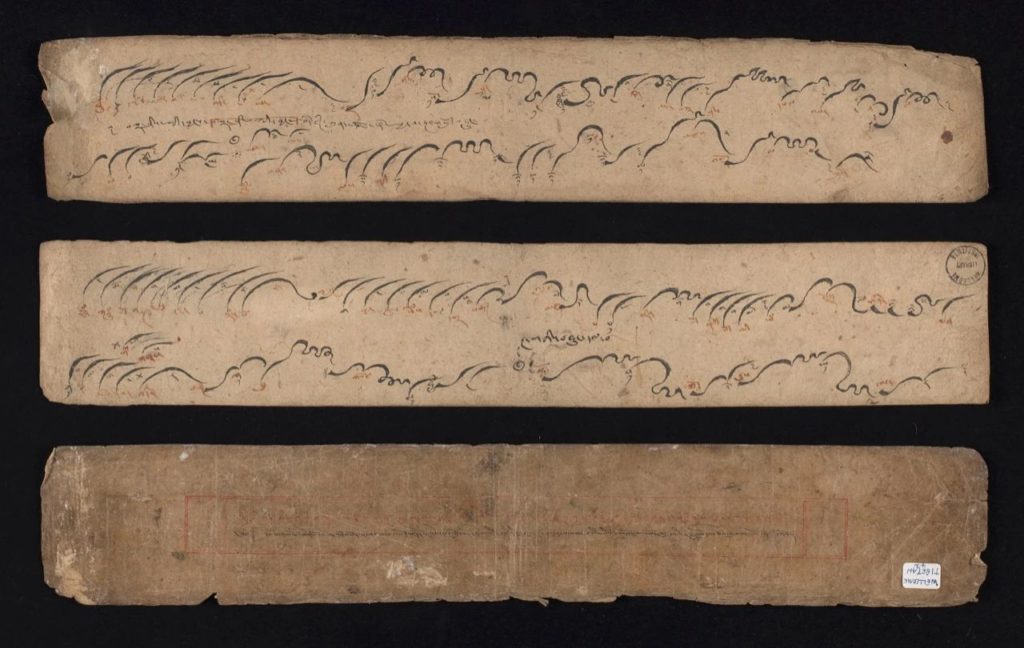
The “Yang-Yig” scoring tradition can be traced back to the time of the songs of Milarepa. In the 14th century, “Yang-Yig” developed into a system consisting of seven parallel lines on which various musical lines would be drawn, which formed the musical score. In a narrow sense, the “Yang-Yig” scoring system was valuable as it allowed later generations to learn and continue to perform this kind of music. More broadly, the scoring system is an organic and constituent part of traditional Tibetan Buddhist chanting, which, because of its unique character, became an independent artistic category in ancient books and records.
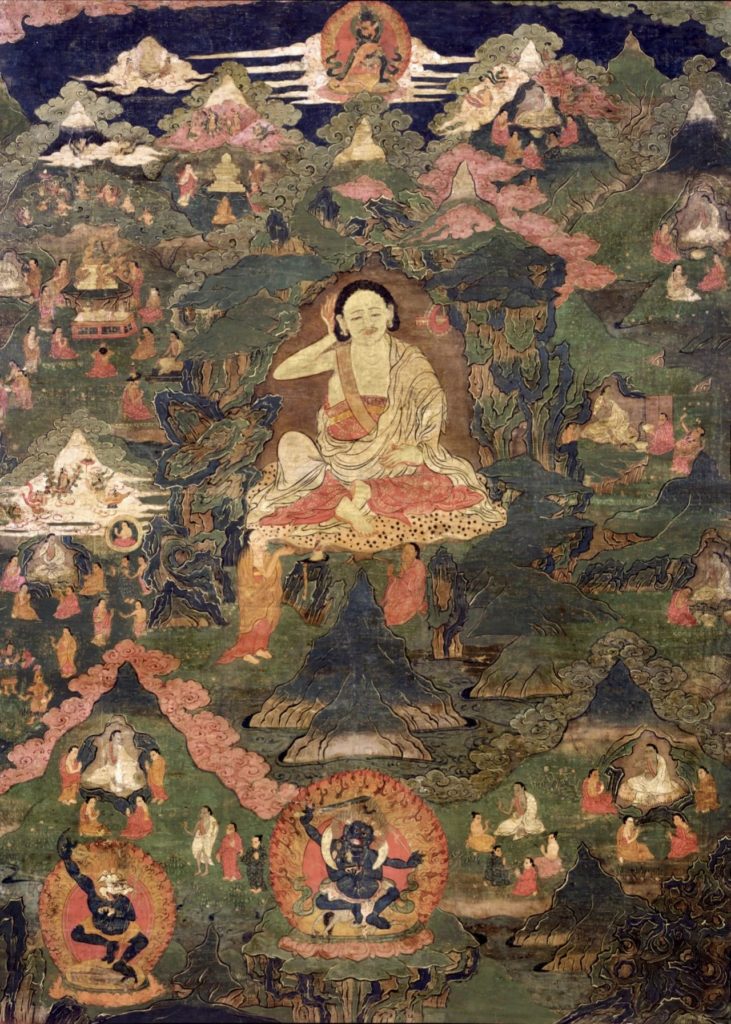
Traditional Tibetan notation uses concrete symbols to represent the melody. For those who do not understand their complex meanings, it may just look like a scenery painted onto a sheet of paper. However, a rich amount of precise information is concealed between the concave and convex shapes, from rhythmic patterns to instrumental arrangements. These symbols are a guidebook for ritual ceremonies. Music is believed to be closely interlinked with “chanting, imagery and gestures.” But it is not only an accompaniment of ritual dances, it is special for its many musical instruments, such as the dungchen whose sound is perfect for the mountainous plateau environment, as well as the unique polyphonic overtone singing.
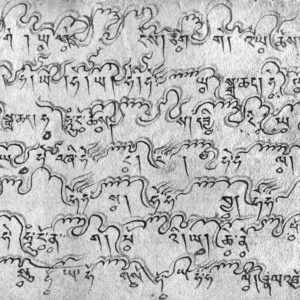
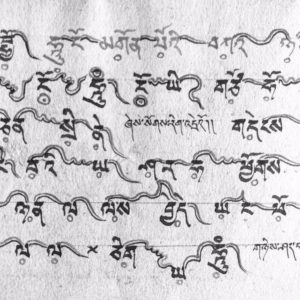
The curved lines indicate the “intonation and ups and downs in the melody” and it also includes information about the kind of atmosphere that the singing should convey, for example: flowing like a river, light like bird song.
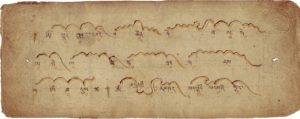
The culture inherent in these symbols goes far beyond the forms and shapes of the symbols themselves. Over the course of history, the musical scoring system has become an integral element of and form through which to experience Tibetan Buddhism, it has become a sacred scripture of memory, an expression of belief and a way to expel evil and invite the spirits.
Since ancient times, these winding lines have allowed spiritual music to be enjoyed and passed on from generation to generation.
January 17, 2020

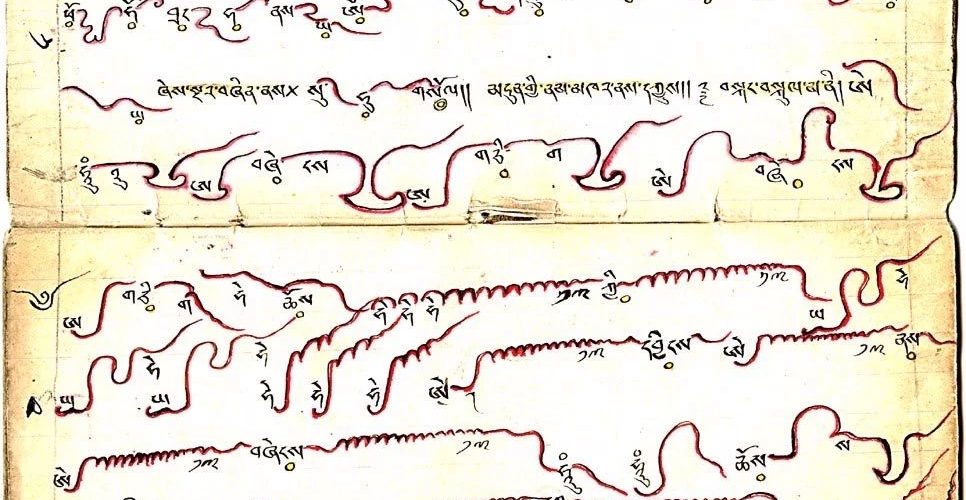

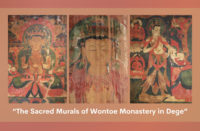

Where could find transliterated versions or sources about how to read these Tibet musical notations? I would love to know!